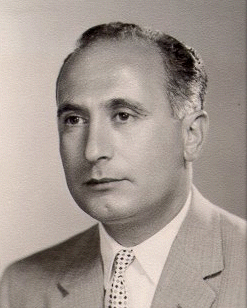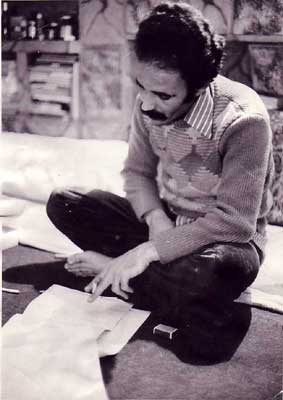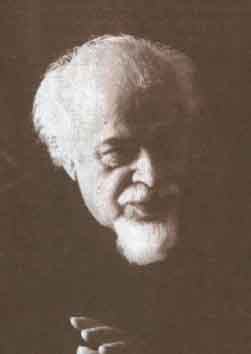
Persian literature comprises oral compositions and written texts in the Persian language and is one of the world's oldest literatures. It spans over two-and-a-half millennia. Its sources have been within Greater Iran including present-day Iran, Iraq, Afghanistan, the Caucasus, and Turkey, regions of Central Asia, South Asia and the Balkans where the Persian language has historically been either the native or official language.

The Blind Owl is Sadegh Hedayat's magnum opus and a major literary work of 20th-century Iran. Written in Persian, it is narrated by an unnamed pen case painter, who addresses his murderous confessions to a shadow on his wall that resembles an owl. His confessions do not follow a linear progression of events and often repeat and layer themselves thematically, thus lending to the open-ended nature of interpretation of the story.

Mehdi Akhavān-Sāles, or Akhavān-Sāless, pen name Mim. Omid was a prominent Iranian poet. He is one of the pioneers of Free Verse in the Persian language.

Ehsan Yarshater was an Iranian historian and linguist who specialized in Iranology. He was the founder and director of the Center for Iranian Studies, and Hagop Kevorkian Professor Emeritus of Iranian Studies at Columbia University.

Houshang Golshiri was an Iranian fiction writer, critic and editor. He was one of the first Iranian writers to use modern literary techniques, and is recognized as one of the most influential writers of Persian prose of the 20th century.

Reza-Qoli Khan Hedayat was an Iranian literary historian, administrator, and poet in 19th-century Qajar Iran.

Nader Naderpour was an Iranian poet.

Iraj Bashiri is professor of history at the University of Minnesota, United States, and one of the leading scholars in the fields of Central Asian studies and Iranian Studies. Fluent in English, Persian, Tajik, and several Turkic languages, Bashiri has been able to study and translate works otherwise inaccessible to the mostly Russian-speaking Central Asian studies community. Bashiri’s career focus started on Iran, and engaged also with Central Asia, notably the Tajik identity and the relations between Tajiks and the Turkic people of Central Asia, namely the Uzbeks.

Homa Katouzian is an economist, historian, sociologist and literary critic, with a special interest in Iranian studies. Katouzian's formal academic training was in economics and the social sciences but he concurrently continued his studies of Persian history and literature at a professional academic level. He began studying the life and works of the modern Persian writer, Sadeq Hedayat, and that of the Prime Minister of Iran in the early 1950s, Mohammad Mosaddeq, while still a faculty member in the department of economics at the University of Kent at Canterbury. Having taught economics at universities in Britain and other countries for eighteen years, he took voluntary retirement in 1986 to devote his entire time to Iranian studies. In recent years, he has been teaching and writing on classical Persian literature, in particular the 13th-century poet and writer, Sa‘di. Currently based at the University of Oxford, Katouzian is a member of the Faculty of Oriental Studies and the Roshan Institute Academic Visitor in Iranian Studies at St. Antony's College, where for thirteen years he edited the bimonthly Iranian Studies, the journal of the Association for Iranian Studies. He is editor of the International Journal of Persian Literature, and co-editor of Routledge's Iranian studies book series. He is also a former member of the editorial board of Comparative Studies of South Asia, Africa and the Middle East and Comparative Economic Studies.

Sādeq Chubak, was an Iranian author of short fiction, drama, and novels. His short stories are characterized by their intricacy, economy of detail, and concentration on a single theme, leading some to compare them to Persian miniature paintings. Choubak was a naturalist, and his novels reflected the dark side of society. He was a very close friend of Sadegh Hedayat who was an influential writer at that time.

Kamal Khujandi, also Kamal Khojandi, Kamaleddin Khojandi, or Kamal-E Khojandi, was a Persian Sufi and Persian ghazal poet of the 14th century.

Gholām-Hossein Sā'edi MD was a prolific Iranian writer.
Kavoos Hasanli is poet, critic, and professor at Shiraz University.

Maxime Feri Farzaneh was a French-Iranian writer and filmmaker. He signed his books "M.F. Farzaneh" and his films "Feri Farzaneh".

The Stray Dog is a 1942 short story collection by Iranian author Sadegh Hedayat.
"The Stray Dog" is a short story by Iranian writer Sadegh Hedayat, first published in 1942 along with seven other short stories in the book of the same name.

Abdolali Dastgheib is an Iranian literary critic, writer, translator and author of 66 books and numerous articles.
Deirdre Eberly Lashgari was an American English literature educator, editor and translator, a specialist in ethnic and world literatures who translated classical and modern Iranian poetry into English. Her pioneering work and leading contributions changed the literary curriculum at Berkeley and other institutes and universities in the United States of America and has normalized the presence of women's voices and writings as part of the syllabus in such departments.




















